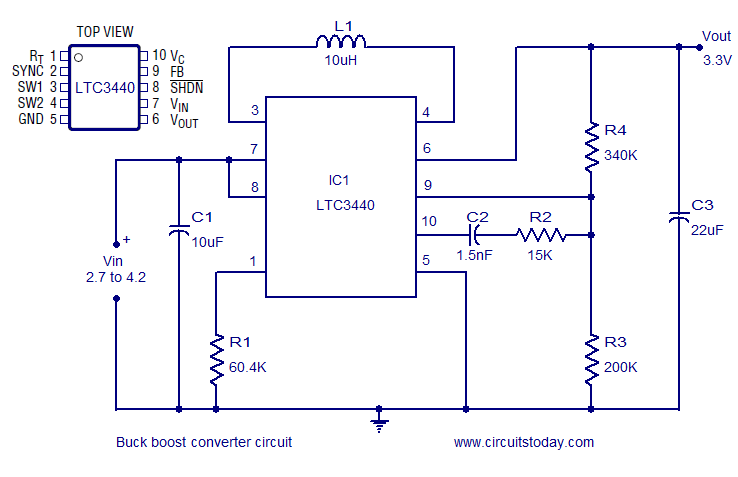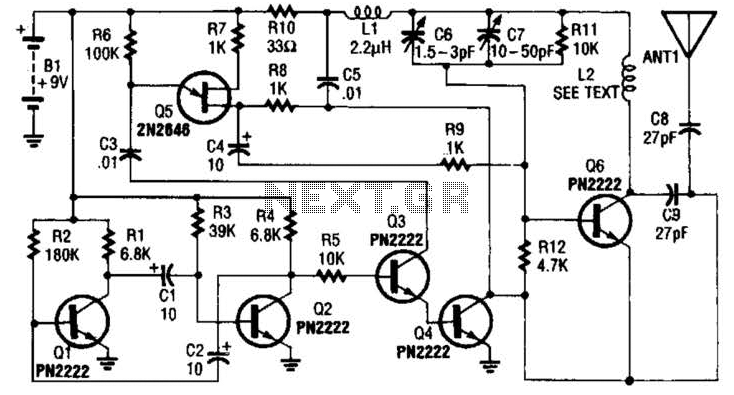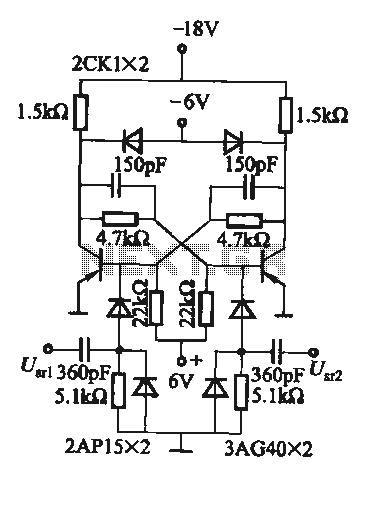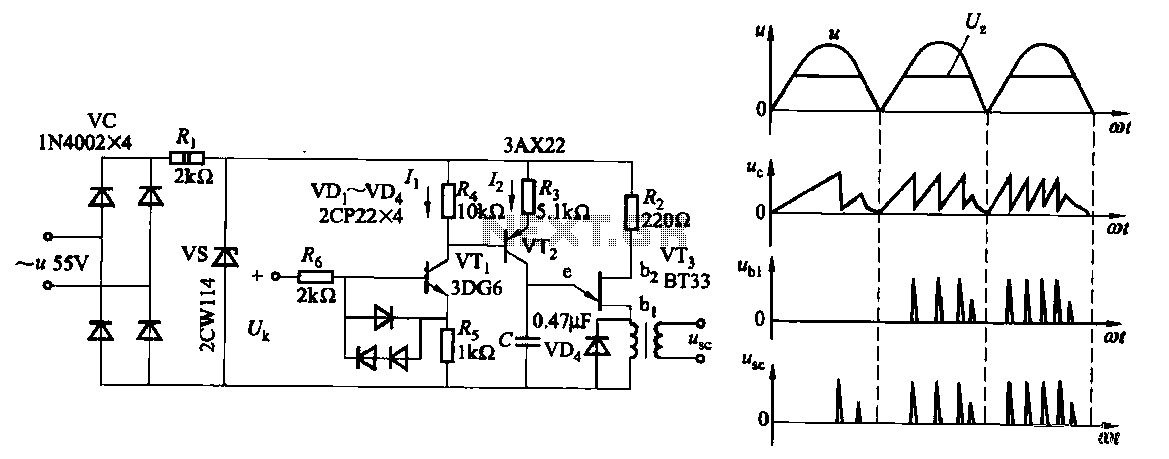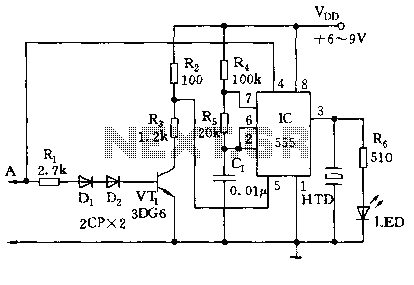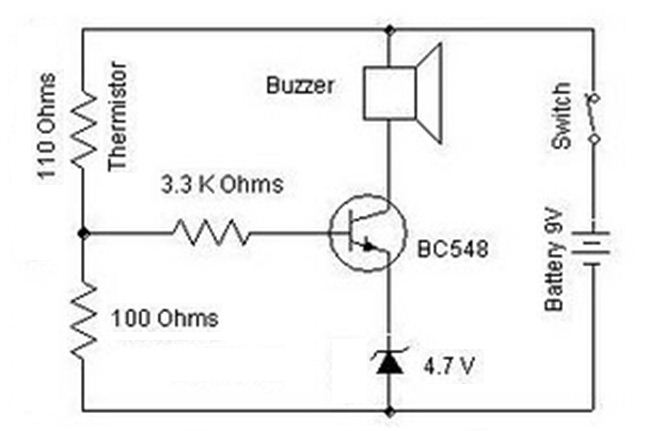
Two Station Intercom based on LM386 circuit
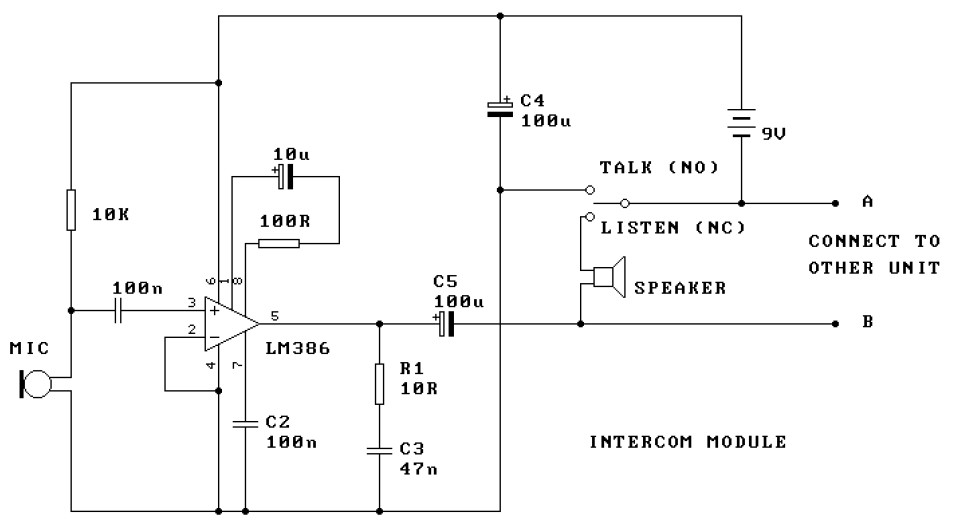
This is a two-station intercom system that operates using two wires connecting each intercom unit. Each unit is self-contained, equipped with its own battery, speaker, microphone, and amplifier circuit. An LM386 audio power amplifier is utilized, which is widely available, requires minimal external components, and is well-suited for battery operation. It can deliver just over 1W into an 8-ohm speaker. The gain of the amplifier can be adjusted by changing the external components connected to pins 1 and 8, allowing for a gain range from 20 (when pins 1 and 8 are not connected) to 200 (when pins 1 and 8 are short-circuited).
The two-station intercom system is designed for simplicity and efficiency, making it an ideal solution for communication in various settings, such as homes, offices, or workshops. Each intercom unit operates independently, powered by its own battery, which enhances portability and ease of installation. The use of two wires for communication minimizes installation complexity and allows for a straightforward wiring setup.
The LM386 audio power amplifier serves as the core component for audio amplification within each unit. Its design features a low power consumption profile, making it particularly advantageous for battery-operated devices. The amplifier can drive an 8-ohm speaker, producing clear audio output suitable for intercom applications. The ability to adjust the gain through external resistors or capacitors connected to pins 1 and 8 enables customization of audio levels based on user preferences or specific environmental requirements. This flexibility is crucial for ensuring optimal performance in different acoustic environments.
The intercom system's microphone captures incoming audio signals, which are then processed by the LM386 amplifier before being output through the speaker. This configuration allows for two-way communication, facilitating effective dialogue between the two stations. The overall design emphasizes reliability and ease of use, ensuring that users can communicate effortlessly without the need for complex setup or maintenance.
In summary, this two-station intercom system is a practical and efficient solution for enhancing communication in various environments. Its self-contained units, powered by batteries and utilizing the LM386 amplifier, provide a reliable and customizable audio solution that meets the needs of users seeking an effective intercom system.This a two station intercom. It uses two wires to run between each intercom unit. Each is self contained with its own battery, speaker, microphone and amplifier circuit. An LM386 audio power amplifier is used. It is widely available, used a minimum of external parts and is well suited to battery operation. It will give just over 1W into the 8 ohm speaker. The gain can be varied by the external components attached to pins 1 and 8. Gain can range from 20 (open circuit pins 1 & 8 not connected) to 200 (pins 1 & 8 short circuited). 🔗 External reference
The two-station intercom system is designed for simplicity and efficiency, making it an ideal solution for communication in various settings, such as homes, offices, or workshops. Each intercom unit operates independently, powered by its own battery, which enhances portability and ease of installation. The use of two wires for communication minimizes installation complexity and allows for a straightforward wiring setup.
The LM386 audio power amplifier serves as the core component for audio amplification within each unit. Its design features a low power consumption profile, making it particularly advantageous for battery-operated devices. The amplifier can drive an 8-ohm speaker, producing clear audio output suitable for intercom applications. The ability to adjust the gain through external resistors or capacitors connected to pins 1 and 8 enables customization of audio levels based on user preferences or specific environmental requirements. This flexibility is crucial for ensuring optimal performance in different acoustic environments.
The intercom system's microphone captures incoming audio signals, which are then processed by the LM386 amplifier before being output through the speaker. This configuration allows for two-way communication, facilitating effective dialogue between the two stations. The overall design emphasizes reliability and ease of use, ensuring that users can communicate effortlessly without the need for complex setup or maintenance.
In summary, this two-station intercom system is a practical and efficient solution for enhancing communication in various environments. Its self-contained units, powered by batteries and utilizing the LM386 amplifier, provide a reliable and customizable audio solution that meets the needs of users seeking an effective intercom system.This a two station intercom. It uses two wires to run between each intercom unit. Each is self contained with its own battery, speaker, microphone and amplifier circuit. An LM386 audio power amplifier is used. It is widely available, used a minimum of external parts and is well suited to battery operation. It will give just over 1W into the 8 ohm speaker. The gain can be varied by the external components attached to pins 1 and 8. Gain can range from 20 (open circuit pins 1 & 8 not connected) to 200 (pins 1 & 8 short circuited). 🔗 External reference
Warning: include(partials/cookie-banner.php): Failed to open stream: Permission denied in /var/www/html/nextgr/view-circuit.php on line 713
Warning: include(): Failed opening 'partials/cookie-banner.php' for inclusion (include_path='.:/usr/share/php') in /var/www/html/nextgr/view-circuit.php on line 713
